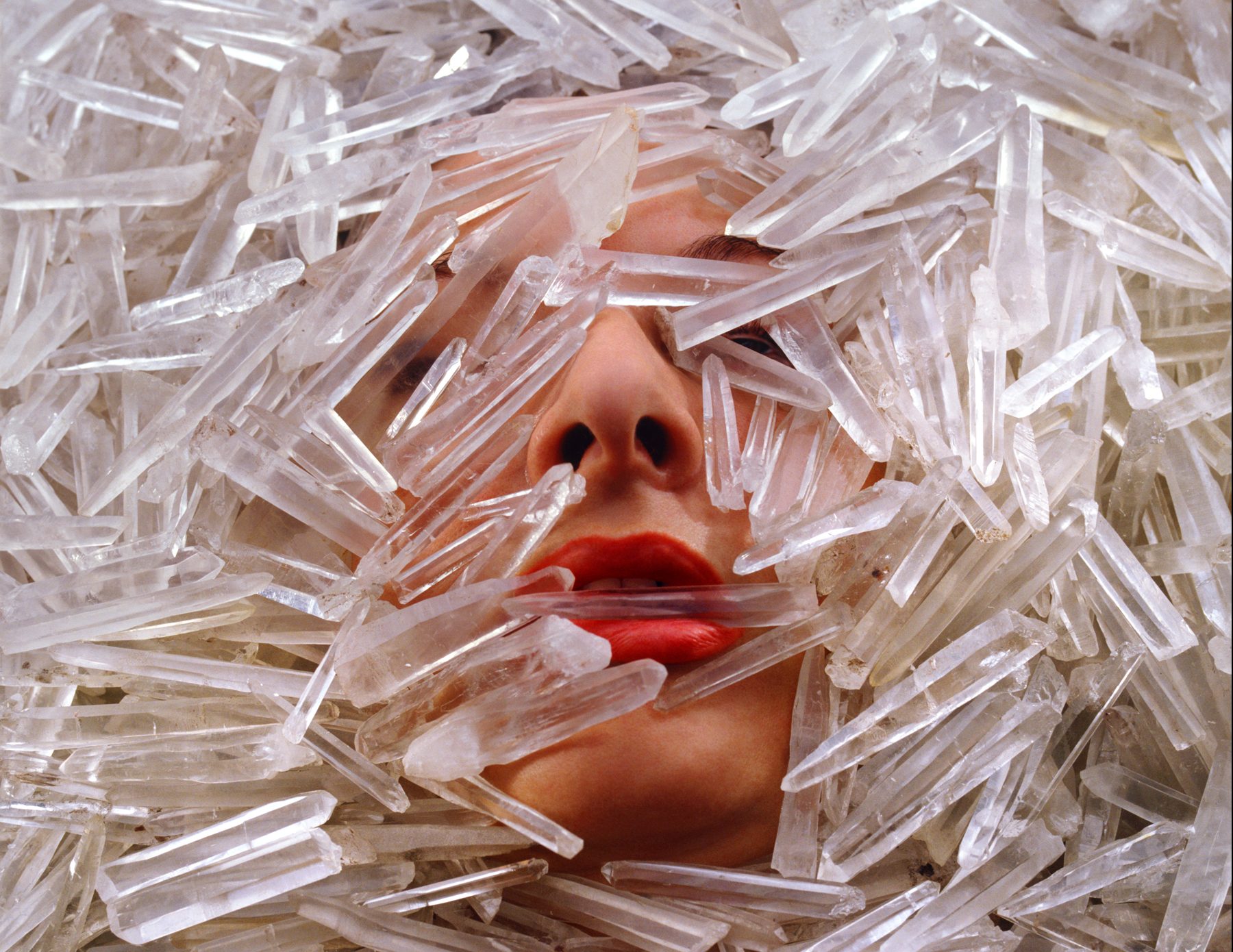Why contemporary art is on the rocks
What is a stone? In a cemetery it’s solemn, in a shoe it’s a nuisance. A diamond ring and a lump of coal share mineral characteristics but can’t be swapped as gifts. Stones can be markers and monuments and weapons; treasure or rubble. Yet, despite their disparate uses and meanings, minerals are often imaginatively grouped together to signify stability and endurance. To be ‘stony’ is, of course, to be tough, inflexible, unmoving. Monarchies and marriages are conferred through precious stones precisely because they are institutions conceived as everlasting – ‘til death do us part, and at death carve our names into stone. Stones are thought of as absolutes. You hit rock bottom. You make yourself crystal clear.
In the messy, malleable sludge of geological reality though, like monarchies and marriages rocks are, in fact, not all that stable. They erode and sediment. They are carried, carved, deposited, shattered; mapped, mythologised, named, used to pray and pave. Stones are contradictory: static and restless; ecology and commodity.

In her new book Lapidarium: The Secret Lives of Stones (2022), the art critic Hettie Judah draws a line between humans’ longstanding lithic fascination and our inability to grasp deep time. ‘Historically,’ she writes in the introduction, ‘stories have helped us make sense of the incomprehensible duration of the world.’ Stones became myths, Judah suggests, because humans had no other way of conceiving time scales unimaginably greater than our own lives: ‘tales of an ancient flood helped explain why the shells of sea creatures can be seen in rocks on a mountaintop.’ Grand narratives of faith and history, in other words, can all be traced in a single cliff face; baked into a fold of the Earth’s crust.
Understanding the mineral world as one of myth and mystery, Judah approaches her subject as a beachcomber, or mudlarker might – with no clear direction, but the collector’s inclination to hoard and categorise. A lapidarium is a place where stone monuments and archaeological fragments are exhibited, and Judah describes hers as ‘a chamber of stones – a jumbled collection of lithic curiosities’. Certainly, the book has the feel of a Wunderkammer. Dive in anywhere, the ‘jumbled collection’ urges, and forge your own connections. Amethyst tells of Ametista do Sul – a region of Brazil known for amethyst mining – and São Gabriel church, its walls coruscating with crystals, ‘some pale as lavender, others brooding violet’. Black shale tells of fracking, and obsidian the videogame world of Minecraft. This is a whistlestop tour through the strata of geography and history. In the 1860s, Eugène Boban supplied crystal skulls to museums, scamming each into believing the carved quartz was an ancient Aztec artefact; a century later, the tailor Nudie Cohn used quartz to turn Elvis into a gold lamé-suited ‘rhinestone cowboy’. Turn the page and Barbara Hepworth is piercing a hole through pink alabaster, ‘describing the experience as one of intense pleasure’.
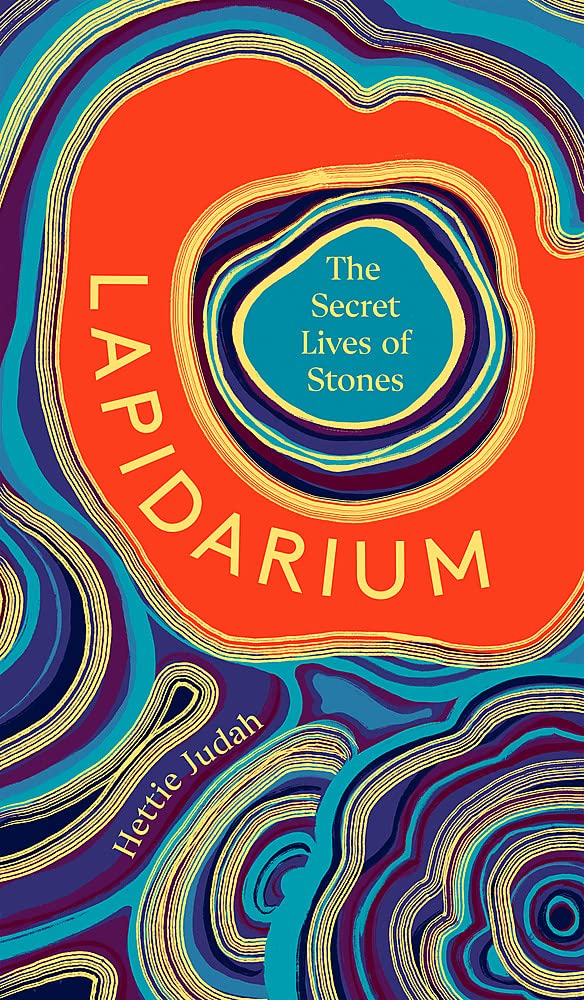
In Lapidarium, spirituality and science often seem to rub against each other. Yet, what is constant and clear is that humanity’s relationship with minerals has been entangled with humanity’s relationship to art for the whole breadth of human history – a temporal scale almost as vast and unimaginable as that of deep time. A different book to Judah’s – one attempting to chronologically order instead of jumble – could have opened with limestone, and a warty pig and buffalo hunt painted using red ochre nearly 44,000 years ago in a cave on the Indonesian island of Sulawesi. Discovered in 2017, the hunting scene was the earliest known cave painting at the time, and was described by researchers as ‘the oldest pictorial record of storytelling and the earliest figurative artwork in the world’. Rock to ochre and back again; man, mineral, pig and pigment all held together.

Instead of prehistoric pigs, Judah comes to consider the transformation of rock to pigment through cinnabar, and its use in the mercurial work of alchemy. ‘As a compound of sulphur and mercury,’ cinnabar is ‘the closest manifestation in nature of that mythic substance, the philosopher’s stone.’ From the third century BCE onwards – and cultures as diverse as China’s Qin Dynasty, eighth-century Iran, and fourteenth-century India – alchemists used cinnabar in the hunt for the elixir of life. But, as Judah notes, ‘artists, too, used cinnabar as a pigment’, romantically declaring that ‘the use of mineral colours honours the Earth as a living soul, with the artist now assuming the role of the alchemist’. Perhaps, then, we should picture the artist as the midpoint – or interlocutor – between scientist and spiritual healer.
Surveying the contemporary artworld, it is hard to avoid the sense that this is indeed how many artists are positioning themselves. Much has been made of both culture’s recent ‘mystical turn’ and a renewed interest in the microbial and mycological. Fungi and clay; ecology and tactility. Combined, these two movements form a wave of New Materialism, which seeks to re-examine inert understanding of matter and give it a dynamic, spiritual dimension; to perform alchemy. At the heart of this is stone, or, more accurately an expansive geology that looks, from certain angles, like a strange merging of the Neolithic and the New Age. Indeed, in a recent article to accompany the release of Lapidarium, Judah looks at the recent Frieze London art fair ‘littered with lumps of rock’ – ‘obsidian carved by Julian Charrière, Daniel Arsham’s techno fossils, and Liz Larner’s ceramic sculptures with large crystals coruscating from the glaze’ – and declares ‘the artworld has taken a geological turn’.
Yet, this ‘turn’ has been coming for some time. So, let’s dig. When the US housing market collapsed over a decade ago and stresses began to show in the global financial system, in the artworld precious stones and crystals became proxies for anxieties about overconsumption – their contradictory nature allowing artists to create works that were beautiful but gestured towards excess and destruction. In Marilyn Minter’s large enamel painting Crystal Swallow (2006), parted red lips hold a string of jewels like gumdrops. But, despite aping sleek fashion imagery, this isn’t a portrait of material luxury or spiritual healing. Drops of perspiration around the mouth mimic the gems, making Minter’s work glisten with horror. Crystal Swallow looks like an assault of overconsumption; like drowning. Then, in 2008, Seizure. Roger Hiorns claimed a former council flat in a south London block scheduled for demolition, and grew within it copper sulphate crystals at an industrial scale. Reportedly a source of inspiration for Björk’s song ‘Crystalline’ (2011), Seizure seemed at once like an ancient cave, a luminescent and sacred tomb, and a room left to rot – the crystals wavering between treasure and decay.
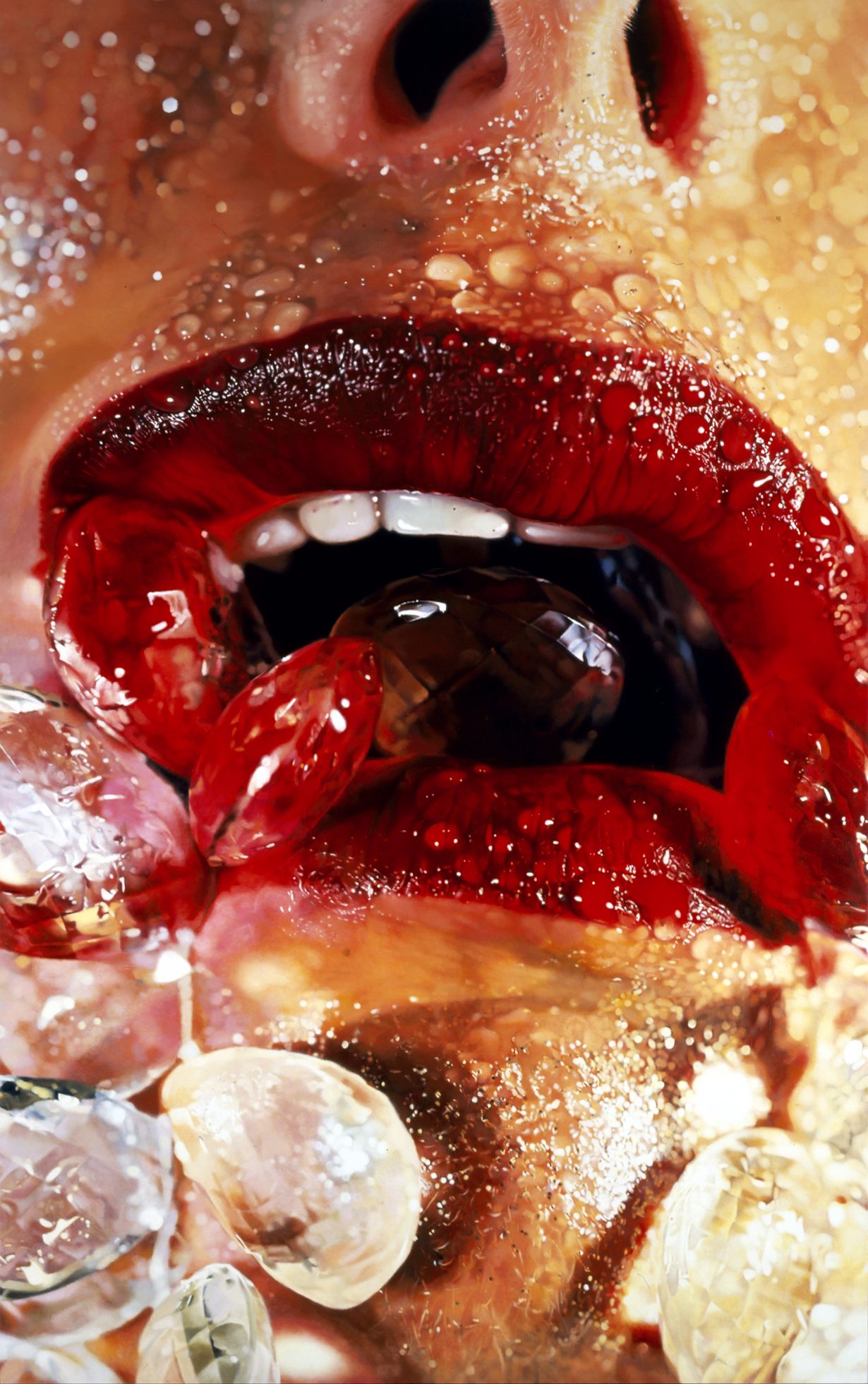
Then, in 2010, another strata started to form when political theorist Jane Bennett published Vibrant Matter: A Political Ecology of Things, arguing against the common division of the world into ‘dull matter (it, things) and vibrant life (us, beings)’. Working from the idea that the ‘image of dead or thoroughly instrumentalized matter feeds human hubris and our earth-destroying fantasies of conquest and consumption’, Bennett advocated for a ‘vital materiality’ that understands ‘things’ as vibrant agents or forces. The ‘being-ness of things’ and the ‘thingness of being’ became of vital concern, with theorists and artists alike reflecting on lively nonhuman forces and the interdependency of all processes in the natural world. Artist Miya Ando submerged aluminium sheets in electrochemical baths and plated them with sapphire crystals which take up dyes more readily – transforming industrial materials into radiant, ephemeral artworks, such as 2011’s Tides. In 2013, in a solo exhibition at the Museum for Contemporary Art in Tokyo, Tokujin Yoshioka exposed crystals to the orchestral vibrations of Tchaikovsky’s Swan Lake (1876), prompting them to grow into strange paintings and sculptures of ‘accidental beauty’. A year later, philosopher Steven Shaviro, in The Universe of Things (2014), asked, ‘what is it like to be a rock?’
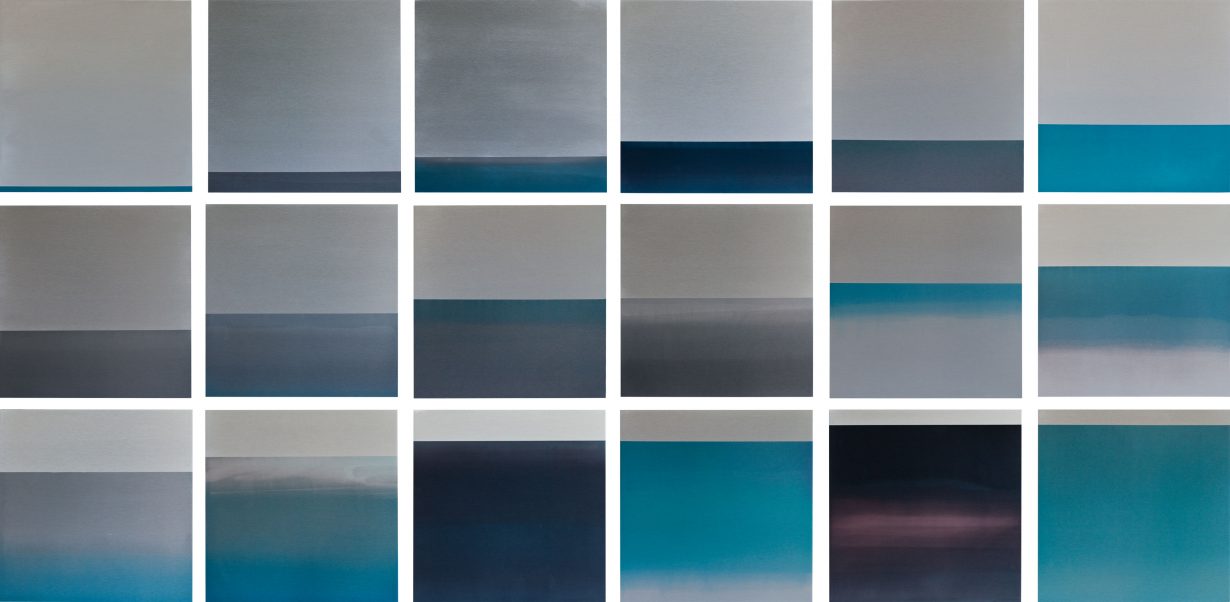
As it became increasingly commonplace to consider matter as alive – even possibly possessing minds or ‘souls’ – what much of this amounted to was the re-enchantment of nature. As in alchemy, stones were imaginatively transformed from inert matter into dynamic material with a charged, even spiritual power. Crucially, they were conceived as having the power to influence human behaviour, with Shaviro declaring that ‘our fundamental condition is one of ubiquitous and inescapable connections’. Similarly, in Stone: An Ecology of the Inhuman (2015), literary scholar Jeffrey Jerome Cohen suggested that ‘despite its incalculable temporality, the lithic is not some vast and alien outside. A limit-breaching intimacy persistently unfolds.’ And, in contemporary art too, ‘limit-breaching intimacy’ becomes the order of the day. In a piece titled Swallow all the Brains (2015), Jason de Haan perched clam and ammonite fossils on the spouts of black ultrasonic humidifiers, vaporising them. The broken-down particles of ancient creatures and minerals circulate in the gallery space and are ingested into the lungs of viewers – a cycle of involuntary, inescapable interaction. Crystals in Art: Ancient to Today (2019) at the Crystal Bridges Museum of American Art, Arkansas displayed Minter’s Crystal Swallow in dialogue with Marina Abramovic’s film Dozing Consciousness, in which the artist’s face is buried in quartz crystals that shift as she inhales and exhales, as if in reverie. A five-foot tall quartz chunk is installed nearby, named ‘The Holy Grail’.
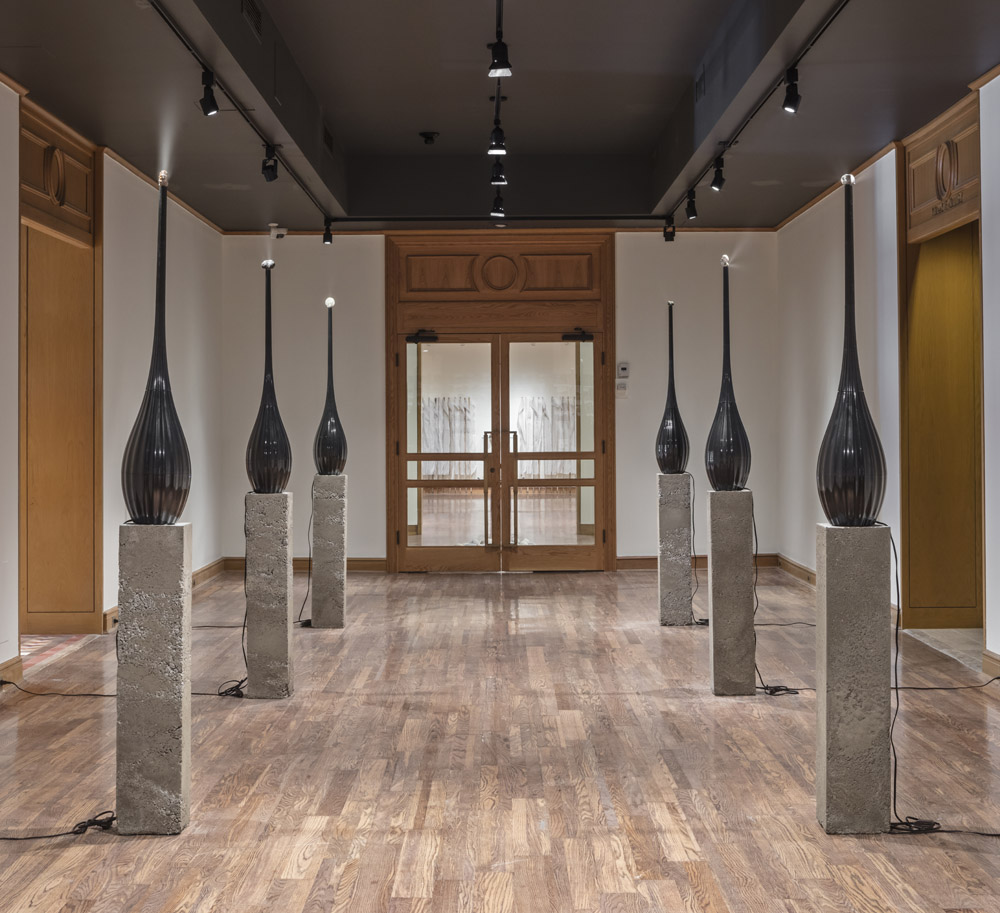
So, stone comes alive and the art world petrifies. But what really happens when a restless rock-in-process becomes an installation, presented and labelled in an exhibition space? How is it valued? Does it become a product? The artworld, after all, is not the only industry that has witnessed a ‘geological turn’ in the last decade or so. With fashion, beauty and wellness all falling prey to a crystalline craze, it seems the re-enchantment of nature is also a profitable business venture. Riccardo Tisci’s models wore slices of agate around their necks as part of his SS17 Givenchy collection; Christopher Kane festooned Balenciaga crocs with crystal-like rocks; Mary-Kate and Ashley Olsen handed out white and black stones (the former for ‘universal harmony’, the latter for ‘protection’) to guests at their New York Fashion Week show for label The Row. Are these instances also evidence of a new reverence for humanity’s inescapable connection to the mineral world? Should Gwyneth Paltrow selling quartz crystal-infused water bottles for £70 (supposedly to stimulate positive energy) be lumped into the same cultural moment as de Haan’s Swallow all the Brains? Both use ingestion to promote a ‘limit-breaching intimacy’ with the mineral world, after all.
Yet, by putting stones in the service of profit, it is clear that the contemporary crystal trend still upholds what Bennett describes as humanity’s ‘earth-destroying fantasies of conquest and consumption’. A CBNC video in 2019 reported that mine owners have seen the price of amethyst crystals increase fivefold over the past 10 years. Other reports suggested such minerals and crystals could now be the new ‘blood or conflict diamond’. The only difference, perhaps, with this contemporary crystal rush is that the story being told about it has taken on a romantic gloss – with theories that allow us to see the dynamic, spiritual qualities of matter, stones are now mined and sold as emotional and spiritual resources. Indeed, Los Angeles-based fine jewellery designer Jacquie Aiche summed it up when she told the New York Times, ‘I don’t sell jewellery, I sell energy’.
And when it comes to extractive and ‘earth-destroying fantasies’, is the crystal-crazed contemporary artworld any different? In the article ‘Taking the Romance out of Extraction’ (2011), Peter Hodgins and Peter Thompson describe the ‘extractive gaze’ as that which reduces nature to a ‘cache of inert matter to be dammed, dug up, cut down, flattened out, raised up, divided and sub-divided, harvested, photographed, mapped, assayed, bought, and sold and generally manipulated in order to serve all-too-human purposes’. After the last decade of cultural petrification, we might be less likely to think of matter as ‘inert’ or ‘dead’, but it remains thoroughly instrumentalized.
So perhaps now, as the ‘geological turn’ enters a new cycle, the artworld needs to take the romance out and truly get to grips with its own ‘extractive gaze’. It must pay attention to the ways the spiritual, ‘vital’ qualities of nature can be mined and sold – with commodity chains obscured – as sources of emotional succour within and against a coldly rational capitalist world. Rather than imagining the artist as alchemist transforming base matter into subtle magic, this wave of New Materialism must insist against such treasure fantasies, making its bedrock the raw, messy reality of dirt itself.
